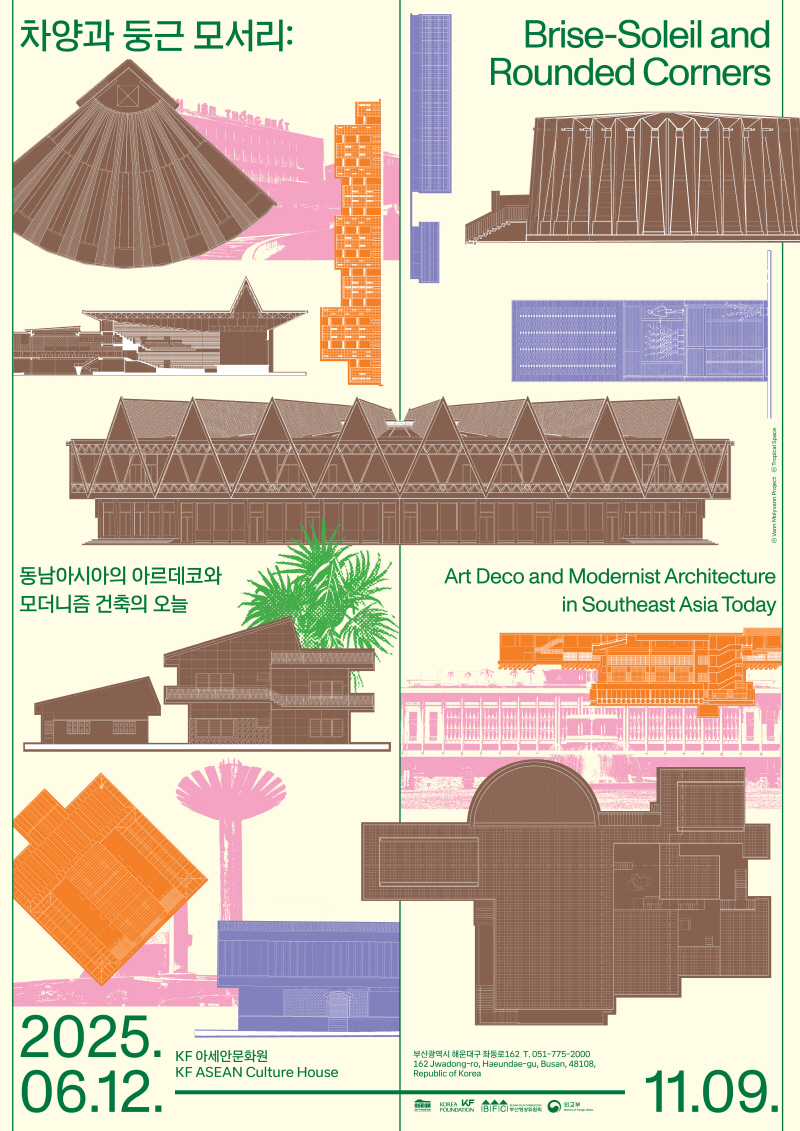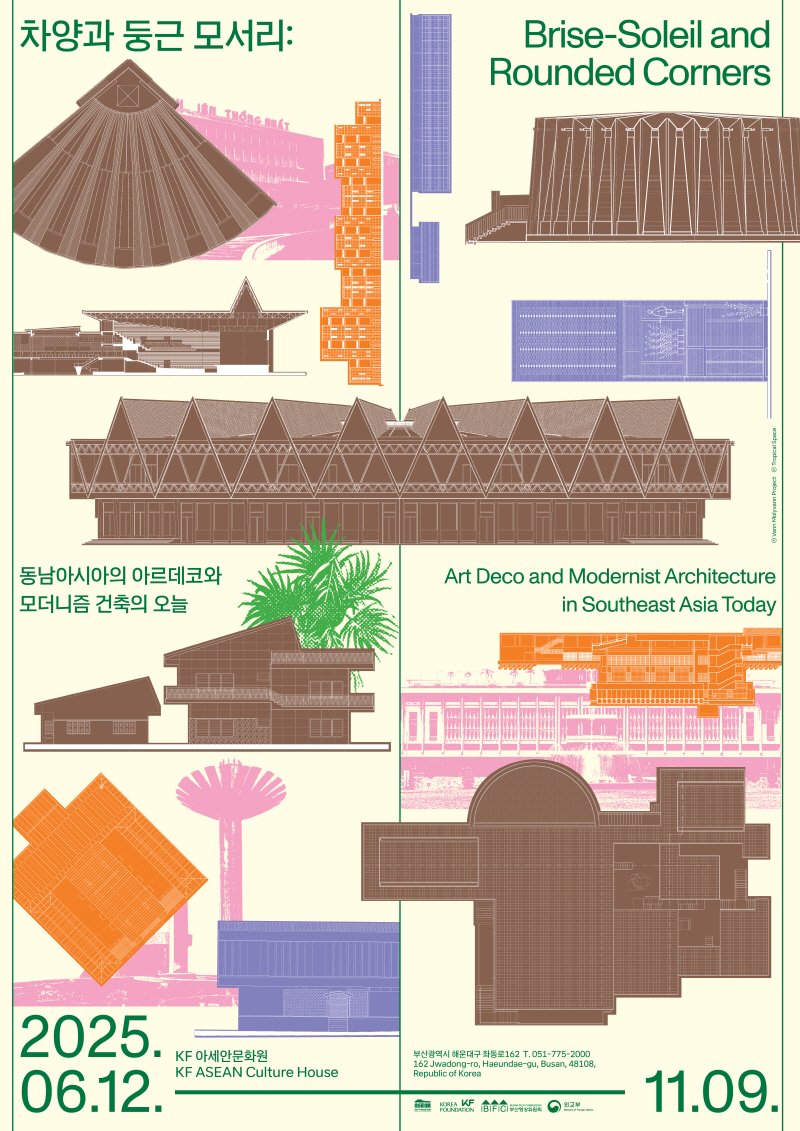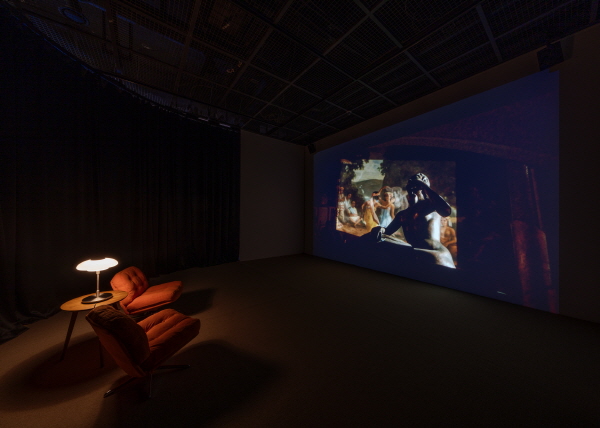
Jun 12, 2025 - Nov 09, 2025
Tue~Fri 10:00~18:00 / Sat, Sun 10:00~19:00
162 Jwadong-ro, Haeundae-gu, Busan, Republic of Korea null
FREE
KF ASEAN Culture House, KOREA FOUNDATION, BUSAN FILM COMMISSION, Ministry of Foreign Affairs
051-775-2000

Brise-Soleil and Rounded Corners: Art Deco and Modernist Architecture in Southeast Asia Today
2025. 6. 12. - 11. 9.
The major cities of Southeast Asia – established as free trade ports during the age of imperialism, and still serving as key economic and administrative centres today – witnessed explosive population growth in the early twentieth century. Exploitative export-based economic systems imposed by colonising powers laid the groundwork for the dynamics upon which these cities grew, absorbing vast resources and human capital at an unprecedented rate. This triggered steady population flow from self-sufficient agrarian regions into urban centres, alongside a dramatic surge in trans-border migration. As a consequence, demand grew for new forms of architecture: open-air markets were replaced by indoor market halls; high-rise buildings, factories, mixed-use residential buildings and apartment blocks emerged; theatres ushered in the age of popular culture. Technological advances also helped to meet this demand. Architects introduced new design languages using modern materials like steel, concrete, and glass. Such developments heralded the birth of Art Deco and modernist Architecture.
Brise-Soleil and Rounded Corners: Art Deco and Modernist Architecture in Southeast Asia Today, curated in line the theme of ‘Architectural Heritage and the Urban Everyday’, is in celebration of the upcoming the 32nd Asia-Pacific Economic Cooperation Summit to be hosted in Gyeongju, Gyeongsangbuk-do this October. It showcases modern and contemporary architectural heritage to augment public understanding of the making of major cities of the ASEAN member states, while also highlighting the rich narratives of urban dwellers and their connections to Southeast Asia’s contemporary urban landscapes, where diverse architectural forms coexist. Recognising that Southeast Asian modern and contemporary architecture may be relatively unfamiliar to domestic audiences, the exhibited works are grouped across three sections – ‘Memories of Architecture, Architecture of Memories’; ‘Top-Down Architecture, Bottom-Up Architecture’; ‘Conserving and Extending Values’ – and yet the exhibited works do not follow any strict order. This reflects the curatorial aim to introduce spontaneity to the exhibition narrative, mirroring the ways in which Southeast Asian urban landscapes serve as living representations of their coexistence of epochs and styles.
‘Brise-Soleil and Rounded Corners’, the title of the exhibition, references a concept transplanted from the West, however, the exhibition was inspired by an architectural scene in which a brise-soleil provides shade over a sunlit and breezy spiral staircase, embodying the confluence of tropical climate conditions and pre-colonial indigenous cultures. While a spatial experience such as this may be part of everyday life, understanding the architects’ intentions or the social or cultural contexts from which they emerged is no easy task. In this way, architecture initiates a subtle dialogue with its users. It encapsulates the sensitivities and needs of its time through distinctive design languages and is in a state of perpetual reinterpretation. This exhibition aspires to capture the complex interactions between architecture and people, architecture and society, through the exhibited videos, photographs and architectural models. It invites visitors to travel through the ‘holistic landscapes’ of Southeast Asia’s major cities, and to delight in the discovery of the multifarious stories and scenes on display.
.jpg)









162 Jwadong-ro, Haeundae-gu, Busan, Republic of Korea (48108)